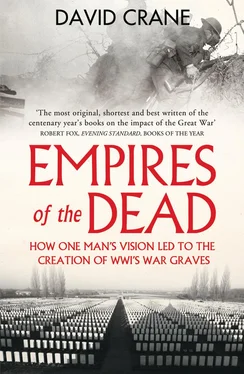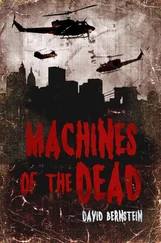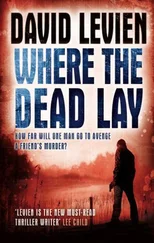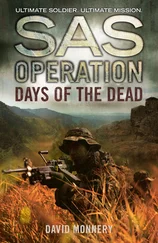A thin scattering of British graves across Europe does survive – three at Elvas in Portugal, another cluster on the rocky Atlantic-facing slopes above San Sebastián, three from 1813 in the mayoral garden at Biarritz, a few tablets preserved by Napoleon III from the Battle of Toulouse, Bayonne, a tiny clutch on the slopes of the Alma, sixteen in Brussels – but these are almost all the product of family or regimental piety and closer in their air of melancholy to forgotten pet cemeteries than to national monuments. fn1
These are virtually all officers’ graves; the ‘Die-hards’ who fell where they stood at Albuera or the ‘scum of the earth’ who won Waterloo could never expect anything more than a rapidly dug pit and a mass burial. In the immediate aftermath of battle the danger of disease naturally dictated haste, and yet it is hard not to wonder at the failure of imagination or humanity that separated the age which built All Souls, Oxford in memory of the dead of the Hundred Years War, or raised a chantry chapel on the field of Shrewsbury from that which could sanction the post-battle horrors of Waterloo. ‘The countrymen told us, that so great were the number of the slain, that it was impossible entirely to consume them,’ wrote Charlotte Eaton, who had picked her way through the human skulls and fleshless hands jutting out of the earth of Waterloo a month after the battle. ‘Pits had been dug, into which they had been thrown, but they were obliged to be raised far above the surface of the ground. These dreadful heaps were covered with piles of wood, which were set on fire, so that underneath the ashes lay numbers of human bodies unconsumed.’
A complex interplay of social, cultural and religious factors divides the medieval mindset from Waterloo, but a simpler reason is that it took a long time for Britain to overcome a deep-rooted suspicion of its armies. In the course of the nineteenth century something like a rapprochement did occur, but for great tracts of its early modern history, Britain’s European wars were widely seen as ‘ministers’ wars’, or ‘Hanover’s wars’, or ‘Tory wars’, and her armies either instruments of oppression or costly pawns in dynastic coalition struggles that had more to do with an imported monarchy’s German interests than they had with those of a resentful John Bull.
It was not simply a matter of politics, though, because the drunk, the thief, the debtor, the gullible and the unemployed who stocked Britain’s regiments between Cromwell’s God-infused soldiers of Naseby and the citizen armies of the twentieth century, were not easy men to love. Dr Johnson might insist that every man thought the less of himself for not having been a soldier, but one would be hard pressed, as Charles Carrington who served his military apprenticeship in the trenches of the Western Front pointed out, to find much between Shakespeare’s Henry V and Kipling that offered anything like a sympathetic vision of the common soldier.
The sense of alienation was largely mutual and if there were clearly men fired by patriotism – or at least a consistent contempt for foreigners that did just as well – the loyalties that made the British Army so formidable a fighting force were to friends, comrades, regiment and then, just sometimes, their officers. There was a good deal made in recruiting posters of the opportunities for glory in the service of the Queen or King, and yet when all is said, these were men – especially the Irish and Scots – fighting for a society that had found no room for them before they enlisted and from which, when they finished their service, they could expect nothing in return.
From the long perspective of the twenty-first century, when within living memory two world wars have forged a covenant of army and nation, it is hard to grasp how little the armies and great victories of the coalition Wars of Austrian or Spanish Succession, for example, belonged to the nation as a whole. In an age of battlefield tourism, those conflicts are probably now better known and recorded than they have ever been, but generations of British travellers and Grand Tourists, who would happily cross Europe to gaze upon the ‘holy, haunted ground’ of Marathon and Thermopylae, would no more have dreamed of visiting Ramillies or Malplaquet than the young Byron – the first major poet of modern warfare, after all – could bother to make the small detour from his Peninsula travels in 1808 to see where Vimeiro had just been fought and won by Wellington’s men.
This lack of connection did not stop the Votes of Thanks in Parliament, the busts and statues in Westminster Abbey and St Paul’s, the building of Blenheim Palace, the patriotic odes or the sporadic outbursts of national triumphalism, but there was no genuine sense of national identification. In the early phases of the struggle against Napoleon, the fear of invasion created something like a national consensus, and yet even Waterloo – the first British battlefield to become a shrine for tourists – was fought against a rainbow opposition of Whig, mercantile and radical opinion that left a great swathe of the country deeply resentful of the ‘abuse’ of British power in the service of a bloated Catholic despot like Louis XVIII.
In the age of the Peterloo Massacre and the ‘Piccadilly Butchers’ – that mini-ice age when the military were used as an instrument of civil power – it is not surprising that the old historic dislike of a standing army persisted, but Waterloo still represents a watershed. It is impossible to put a date to anything so gradual as a shift of public consciousness, and yet in the diaries and travel journals of English men and women in the years after 1815 it is possible to trace a change in that triangular relationship of government, army and people that begins with Waterloo and victory over Napoleon, and is still played out in the press over every defence cut or equipment deficiency that might threaten soldiers’ lives overseas.
This healing process that began with Waterloo – and was finally, and permanently, sealed by the fighting courage and stoic heroism of the common soldier in the Crimea – was in its turn part of a wider social change that affected the Army as much as it did every other aspect of British life. The list of the dead and wounded in Wellington’s Waterloo despatch might just as well have been torn out of Debrett’s, but the heroes of the Crimea and Indian Mutiny were made of different stuff, men such as William Peel and Henry Havelock or Captain Hedley Vicars, who were closer in their high-minded earnestness and Bible-carrying piety to the new middle classes of England from which they sprang than to their Godless predecessors of Badajoz and San Sebastián.
This convergence of identities was important for changing attitudes to the Army, because it coincided with that growing sense of national prestige and providential ‘destiny’ that was to become such a feature of British attitudes during its imperial heyday. Since the time of the Reformation, a profoundly Protestant belief in a divinely appointed national ‘election’ had entered into the English psyche, and as the country emerged from the Napoleonic Wars as the world’s pre-eminent power, this growing sense of predestined mission helped turn her armies from the tools of arbitrary government to place them and the Empire they were creating squarely in the vanguard of Christ’s Second Coming.
Gone were the days when Byron could sneer that ‘after Troy and Marathon’ the field of Waterloo was ‘not much’; gone the Lilliputian embarrassment of Hazlitt when he compared moderns and ancients; gone the sense that Benjamin West’s painting of the death of General Wolfe was an act of blatant lèse majesté . For the eighteenth-century artist, the proper business of history painting might have been the classical past, but to West’s successors of the nineteenth century the natural subject matter of art was not so much the doings of Regulus or Agrippina as the defence of the Coldstream colours at Sandbank Battery, or the Thin Red Line, or the bald-headed heroics of the Marquis of Granby.
Читать дальше












